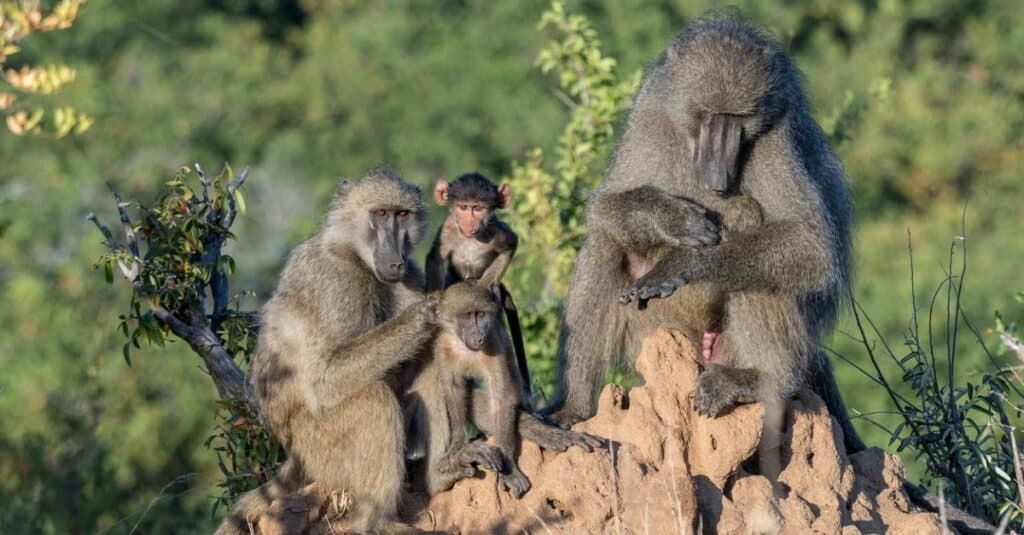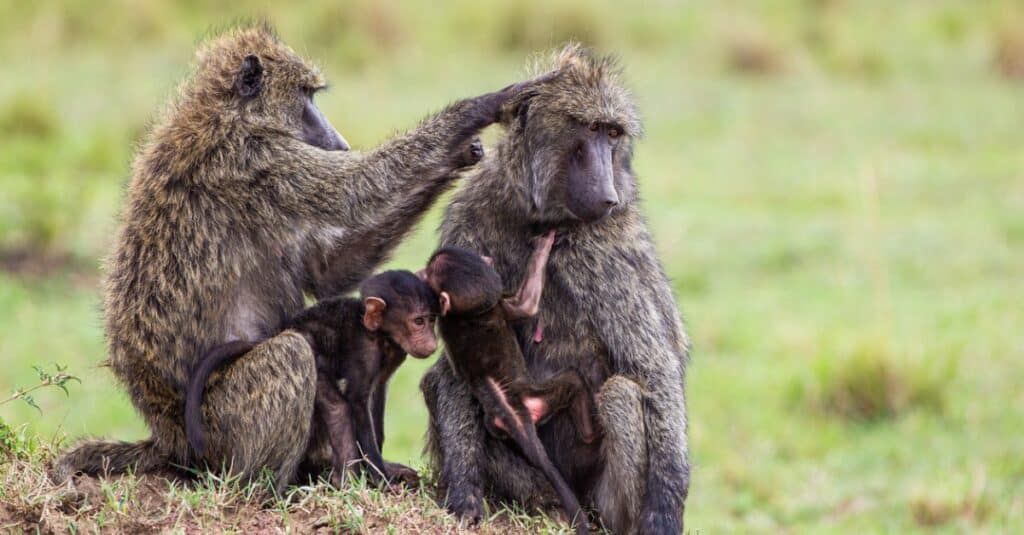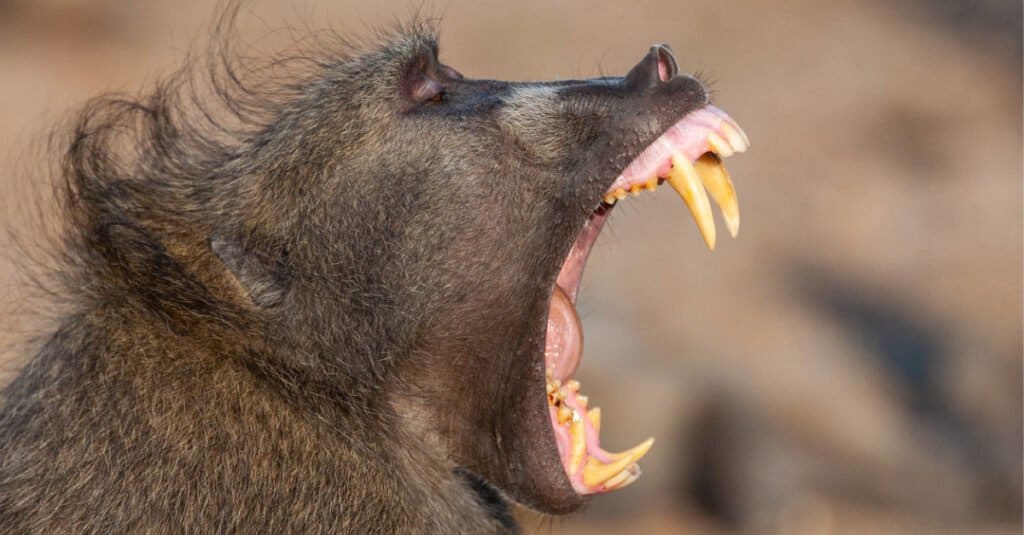Continue reading for our analysis...

Animals that live in groups are often a lot braver when they are with their companions than when they are alone. This seems to be true for baboons. Scroll down to see an amazing clip of a group of baboons who are brave enough to take on a small crocodile.
What Are the Different Types of Baboons?

Baboons form strong social bonds within groups called troops.
©Grobler du Preez/Shutterstock.com
Baboons are highly adaptable medium-large Old World monkeys that live in a variety of habitats in Africa and limited areas of Arabia. They are primates in the Papio genus. There are five different species of baboons. The olive baboon (Papio Anubis) is between 2 and 3 feet long. Guinea baboons (Papio papio) reach about 2 1/2 feet, and chacma baboons (Papio ursinus), also called Cape baboons reach over 3 1/2 feet. The yellow baboon (Papio cynocephalus) measures just over 2 feet, and the Hamadryas baboon (Papio hamadryas) grows to around 2 feet in length.
However, there is evidence of considerable interbreeding between these species leading to a debate about baboon classification. This is not a new phenomenon. Research has shown that interbreeding between olive baboons and yellow baboons occurred hundreds or even thousands of generations ago.
Is It Normal Behavior for Baboons to Live in Groups?

As social animals, baboons form strong family bonds.
©iStock.com/Wayne Marinovich
Baboons are both intelligent and sociable. They live in groups called troops which vary in size but which can contain hundreds of animals. It is this ability to live as a group that allows them to be so flexible about where they live. They are also generalist foragers and can live on a very varied diet.
The male baboons leave the troop when they reach sexual maturity, whilst the females remain and form strong and stable bonds with each other. That said, adult female baboons can also form strong bonds with adult males, and these have lasted for years in some cases.
Living as a group confers a lot of advantages for baboons. It allows them to compete with other animals for food and fend off predators. It reduces stress and gives them a way of gaining a lot of information about the environment. In this case, it allowed them to take on a small crocodile!
Is It Normal for Baboons to Fight Back Against an Attacker?

Baboons will not hesitate to use their sharp teeth to defend themselves against an attacker.
©iStock.com/RudiHulshof
We witnessed an extraordinary display of social cohesion and resilience among baboons as they valiantly defended themselves against a predatory crocodile. While it may be deemed remarkable, this collective defense strategy does indeed align with normal baboon behavior to some extent.
Baboons, highly intelligent and adaptable primates known for their complex social structures, typically live in large troops comprising multiple males, females, and offspring. Within these troops, individuals form intricate relationships through grooming rituals and vocalizations that serve to establish hierarchy and maintain group cohesion.
When confronted with threats or predators such as crocodiles lurking near water sources (which are vital for the survival of both species), baboons often exhibit a vigilant response. In situations where safety is compromised, or imminent danger arises, the troop swiftly mobilizes into action by emitting loud alarm calls while simultaneously displaying aggressive postures toward the intruder. This collaborative defense mechanism aims to deter potential attackers while also safeguarding vulnerable members within their ranks.
Thus, although instances like those seen in the video may certainly captivate our attention due to their dramatic nature, they provide valuable insights into the inherently cooperative nature of baboon behavior—a testament to their evolved strategies for survival amidst challenging environments.
Thank you for reading! Have some feedback for us? Contact the AZ Animals editorial team.





